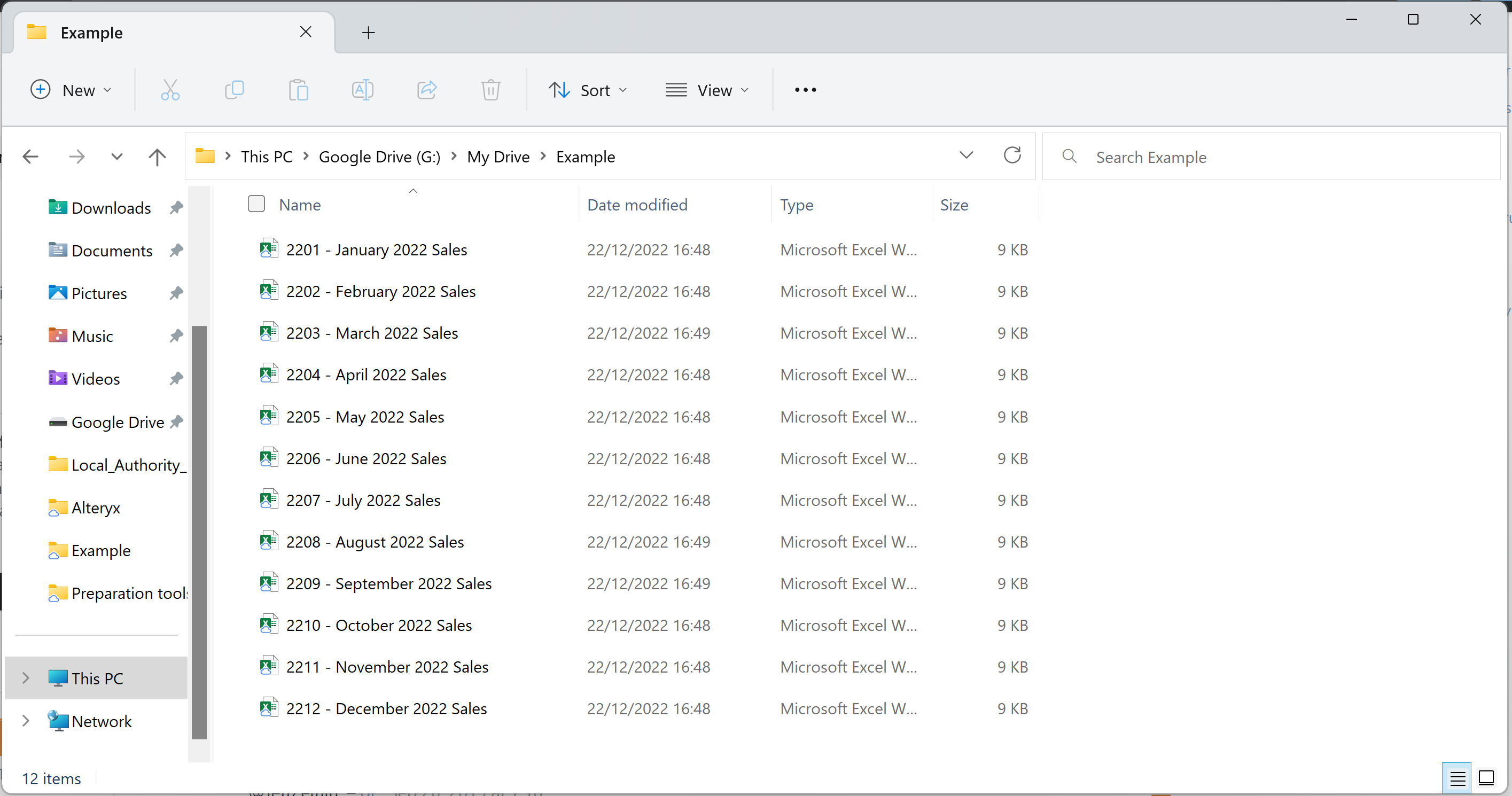Data input is one of the first tools used in Alteryx by any beginner. Dragging and dropping an excel file into the canvas, or selecting a data source from the file explorer, is often sufficient for the user to get started on any analysis they want to conduct. However, there are cases where bringing a large number of individual sources can be advantageous.

For example, some sources will collect their data in separate excel spreadsheets for each month or year, particularly financial data. This can prevent some problems with overfilled excel sheets, but can limit the ease at which analysis across months can be done. In this case, Alteryx has a couple of options to make data input quicker and simpler, known as wildcards.
What is a wildcard?
When importing data into Alteryx from a local file, you'll find the full file location in the top section of the Input Data configuration.

Currently, this reflects the exact location of a single file. However, the file in the first picture clearly shows 12 spreadsheets with relevant data on sales. You could feasibly create 12 Input Data tools and then union the data into a single file for analysis, but it's time consuming and creates the need to manually add more data as it is collected. This is a job for a wildcard!

Each file includes the word sales, and is in the xlsx format. Let's import all the files with this suffix in the folder. The rest of the name is replaced with an asterix (*), which will allow the input file to find all files which end with "Sales.xlsx".
Alternatively, you can replace individual characters with a question mark (?), which allows for any character in it's place. This is particularly useful when importing for the same month across various years, for example in the format "January ????.xlsx".
There are limits to this method:
1) It is reliant on consistent file naming, missing any file which has a different naming system.
2) The wildcard input will also base the union between files on the columns and data types of the first file, matching future files on column names. If there are more columns in future files, they will be dropped, and any discrepancy between column names will hinder the join.
3) It will not work across file formats(.csv and .xlsx wouldn't work together).
4) The files are unioned together in their folder order, which could complicate any disordered files without dates.
However, it is undeniably a powerful method of inputting data, and should be in the arsenal of every Alteryx user for the right situation.
